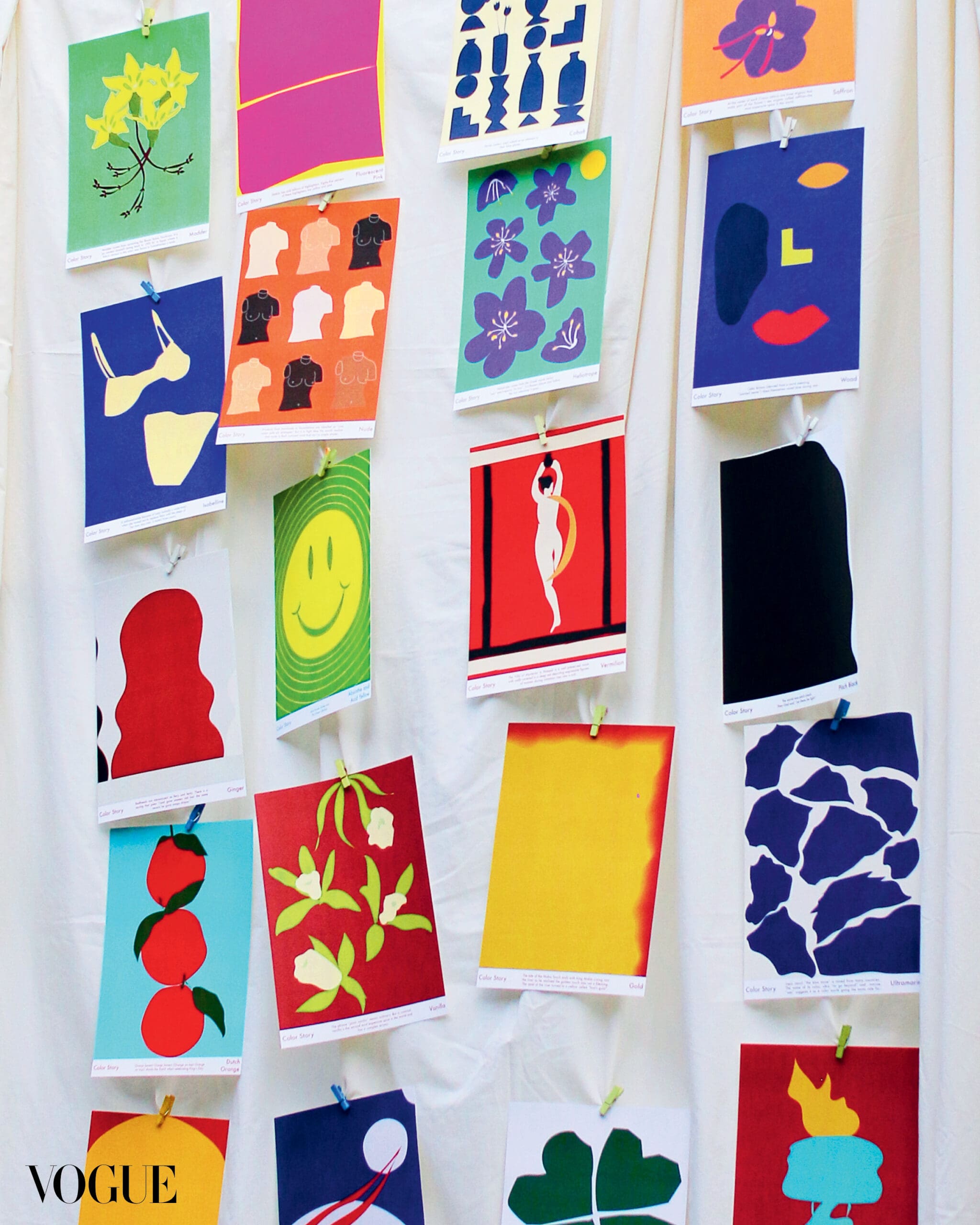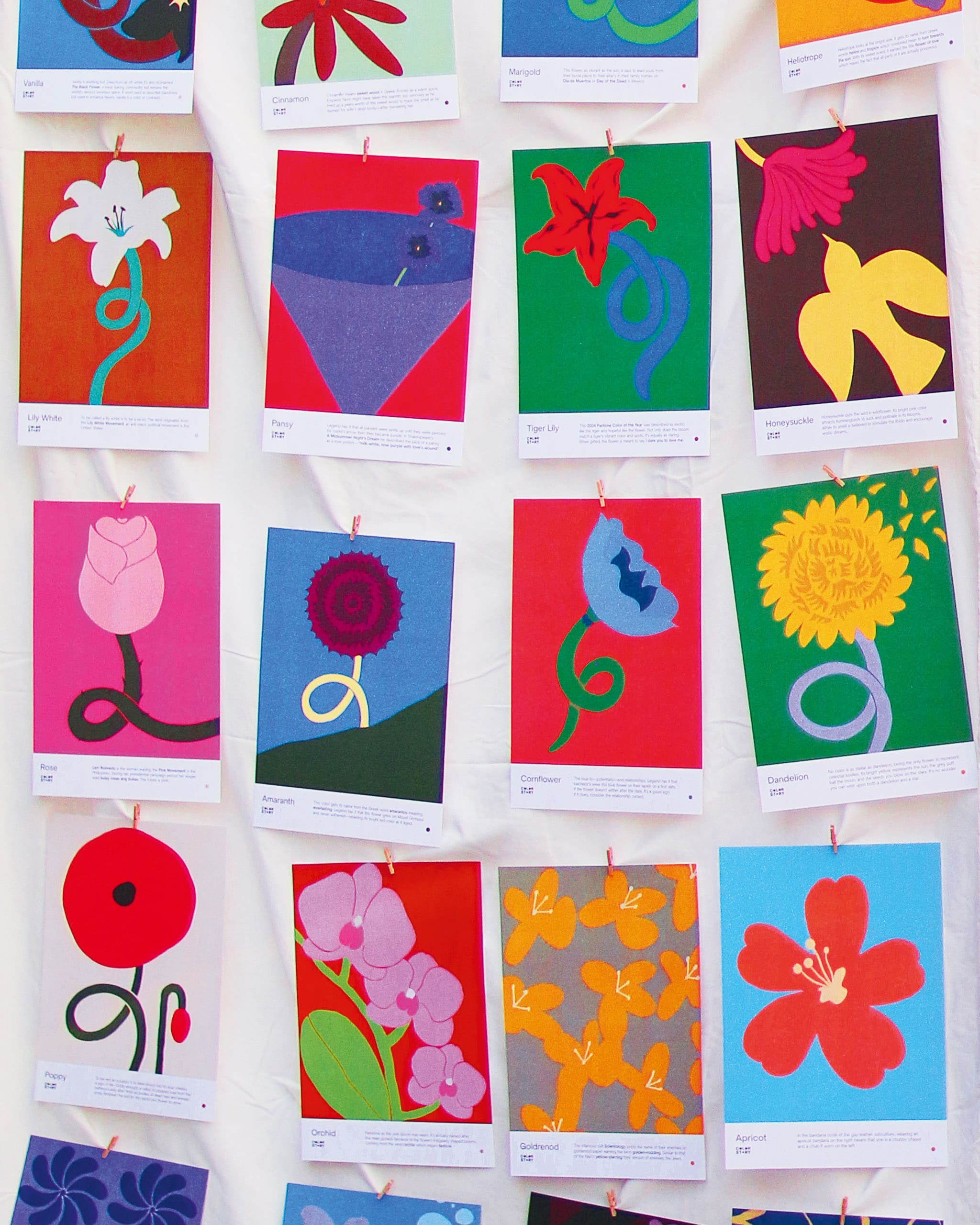In breaking down what colors mean, its evolving ties to our culture are revealed.
Through color, the world is set alight. Fundamental to our experience of the world, color magnifies our truths. “It is a language that allows us to communicate emotions, values, and ideas without words,” says Cecile Poignant, trend forecaster, speaker, and editor of the influential platform Trend Tablet. “It is one of the most powerful tools for expression and creativity.”
To some, colors remind them of a time when palettes were rich in heritage and tradition—interwoven with the identity of the Philippines. Independent curator and critic Marian Pastor Roces says that “the subject of color is in the Philippines a field of amnesia. We lost memory of the subtlest registers of magentas, ochres, alizarenes, golds, indigos, and so forth—the palette of Philippine traditional textiles from marginalized highland to dominant lowland cultures.”
Transcending disciplines, color is an open-ended and complex notion that takes on many forms in different sets of eyes. For centuries, theorists have attempted to decipher the meanings attached to various colors, making it a fascinating yet ambiguous concept.
As a powerful communication tool, color can dramatically impact our emotions and the choices we make. Under its influence, individuals feel and think differently. It can convey any mood, from despair to enthusiasm. As a universal language, it has the ability to shape cultures and compose the framework of our surroundings.
Language & art
The artist is interested in color from an aesthetic perspective. They highlight the relationship between the eye, the brain, and color’s impact on man.
Color has always been a driving force used by creatives to render the world as they see it. In the tinted monuments created by our ancestors, you can understand the emotional dispositions of vanished societies and unravel the people’s sentiments of that time.
Throughout the ages and various movements, Romanesque and Early Gothic artists, chiaroscuro painters, impressionists, neo-impressionists, cubists, and expressionists all used color to build a bridge between thought and feeling–satisfying their sense of what the world should look like and be like.
A vehicle of liberation, artists have leaned into the discipline to provoke thinking and discourse. “You can bring all of the great artists in one room and have them color in an artwork drawn in the same style, and [despite that] how they color and the colors they choose will always depict their own version of reality,” says the artist Vanilla Arucan. “That’s just what an artist does, and that’s what color gives them the agency to do.”
For the past five years, Arucan has centered her practice on a delicate balance between color research and design. Titled “Color Story,” she sheds light on amusing and shocking stories of color. Depicted through illustrated and colored abstractions on posters, she shares her appreciation for obscurity and humor in the mundane.
Based on the senses, color in art becomes a human reaction to the hues found in one’s composition. “Even colors as words don’t ask for an explanation,” she says. “They are both the adjective and the noun: I have the blues, I see a silver lining, I’m green with envy, I’m seeing red, [or] I’m tickled pink. Colors are exactly what they say they are [and] whatever they feel like for you.”

As a science
Through color trends, the trend forecaster studies the pulse of culture.
A marvel tied closely to the relationship between the brain and the mind, color can be attuned to a sensing mechanism. When light strikes an object, it reflects back to the eye and creates a distinct hue.
Color theory is a science and art unto itself. Why is a fiery red tone more appealing than a dull green? Why do you feel more enlivened by a brighter hue than a darker one?
Every color has a meaning, dependent on one’s genetics, experiences, and background. “Color is not only a physical and perceptual phenomenon; it is also a very complex cultural construction that brings into play numerous components,” Poignant says. “Color is first and foremost a social fact.”
To fully grasp the nuances of color symbolism, you must consider their context, cultural associations, and time period. In Ancient Greece, individuals dyed their hair yellow to feel closer to celestial beings. Meanwhile, royal families in the Byzantine era used purple in a ceremonial context to demonstrate their power and social status.
Baby pink has long been linked to feminine gender roles. However, women reclaimed it with the 2016 viral trend called “millennial pink,” occurring alongside the fourth wave of feminism. From Glossier products to Le Creuset cookware, the color took on a genderless connotation representing authenticity, openness, and diversity.
In contemporary fashion, color trends characterize the zeitgeist and spirit of the time.
A continuous dialogue between the community and designers, the colors found within fashion are intrinsically linked to the wants and needs of society.
For trend forecasters like Caroline Guilbert, the head of creative content at Coloro, color carries mood-altering effects that appeal to consumers. “Color trends are a mirror of the state of our world, buyers will continue to make considered purchases, where colors with versatility and long-term appeal are favored,” she says.
For example, neutrals will continue to gain momentum due to their commerciality. Meanwhile, Coloro’s 2023 color of the year, Digital Lavender, has been designated to predict a year full of optimism. This decision reflects a growing need for escapism and to build a more gender-inclusive world.
“The world and our understanding of it evolves based on what we are exposed to,” Guilbert says. “Color is a mirror of who we are, and as a communication tool, it is highly dependable on its context, whether it is cultural, symbolic or even chromatic.”
Poignant adds that “while some colors may be universal, such as the calming effect of blue, others may vary by culture or region. In some Asian cultures, red is associated with good fortune, while in Western cultures, it is often linked with passion or danger.”
Color has become a standard fashion move for luxury houses. Used as replacements for logos, heritage fashion brands have even claimed hues to further stand out.
“In fashion, color can be used to convey a brand’s identity and values: think of the Hermès orange, the Valentino pink, the Tiffany blue, or the Bottega green,” Poignant explains.
In the Metaverse, a digital realm where creativity is not constrained to reality’s limits, brands can paint the virtual world in their own trademark colors.
“Our relationship with color is also shifting with our extending understanding of the world around us,” Guilbert says. She adds that, in the future, the lines between reality and fantasy will become more blurred as “color will evolve to bring to life these new imaginative territories.”
Fashion designers can deploy the use of color in a plethora of ways, using it as a source of inspiration. Yves Saint Laurent’s iconic 1965 Fall/Winter homage to Dutch Painter Piet Mondrian, titled the “Mondrian Collection,” is an intrinsic union between haute couture and the notion of color.
A mastery of color can even be synonymous with a fashion designer’s technique. Italian designer Giorgio Armani is dubbed the “King of Greige” for his abundant use of a muted palette with taupe, sand, and concrete tones in tow. While Antwerp-based designer Dries Van Noten redefines color through his capsules, incorporating nuances of shading, tie-dye, color harmony, and striking prints.
Color can be a reflection of the ebb and flow of creativity and experimentation throughout fashion. Using color as a catalyst, activists, designers, and trend forecasters alike can signal an inspiring and authentic view of the world.
Homegrown Hues
Embedded within the nation’s history, the master dyer and painter created their own hues and worked with a finite palette.
Through one’s window, you can see a melange of colors. There are people walking down the streets; trees hovering in different shapes and hues; birds flying within the blue sky; patches of green interspersed with stores, all contributing to a greater symphony of harmonious tones.
Rich hues douse the canvases of the Philippines, bringing to mind a place called “home.” With 7,641 islands painted with sun-honeyed palm trees, rolling hills, and a spectacle of various rare terrains–the archipelago vibrates into an endless metamorphosis of verdant landscape hues.
“Interest in color in the Philippines has led to clarity about complex parts of ancestral knowledge,” Pastor Roces shares. By unraveling the cultural nuances found within textiles, color can be a tool for storytelling.
Red has been used by the Pinatubo Negrito for medicinal specialists, by tribes in Mindanao for the bagani warrior class, and in other communities by village heads to signify power.
Colors have also been used to depict stages in one’s life. Earthy colors were reserved for funerals or wrapping those who have passed away. Due to its association with Islam, green hues were predominantly used by the Maranao, Maguindanao, Tausug, and Sama Dilia. Yellow, a hue likened to brass, refers to the upper echelon of the Maranao since it’s the color of gold.
“[There is an] inseparability of the color red, sexual heat, knowledge, passion, and headhunting among the Ilongot,” Pasto Roces elaborates. “Similarly, the constellation of ideas embodied by the deeply saturated, red-brown with dried blood color register—for which there is a specific word, linombós—could only be worn by extraordinary bagani/bayani and bailan. In other words, by ritually mature individuals. I carry these ideas today into all my efforts to understand complexity.”
Beautifully vague and beautifully empowered, color enlivens the imaginations of many. It is one of the deepest conceptions of culture, inspiring us to philosophize and narrate the stories of entire communities.
A way of individualization, color can reinforce beliefs, evoke emotions, and become an instrument of communication. Subjective, irrational, and endlessly transforming, it is, without a doubt, a power that speaks to the soul.
This article was originally published on Vogue Philippines, June 2023 Issue.
